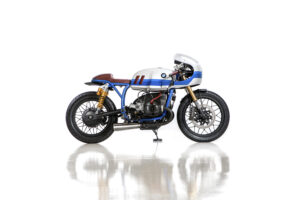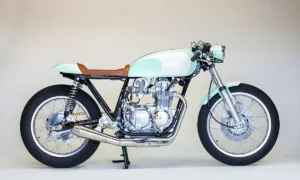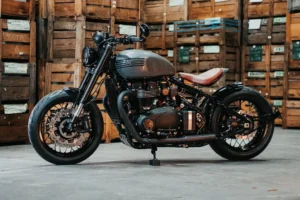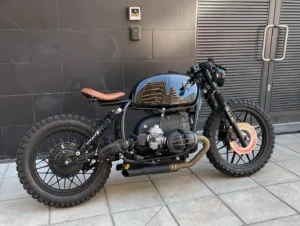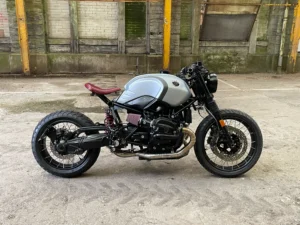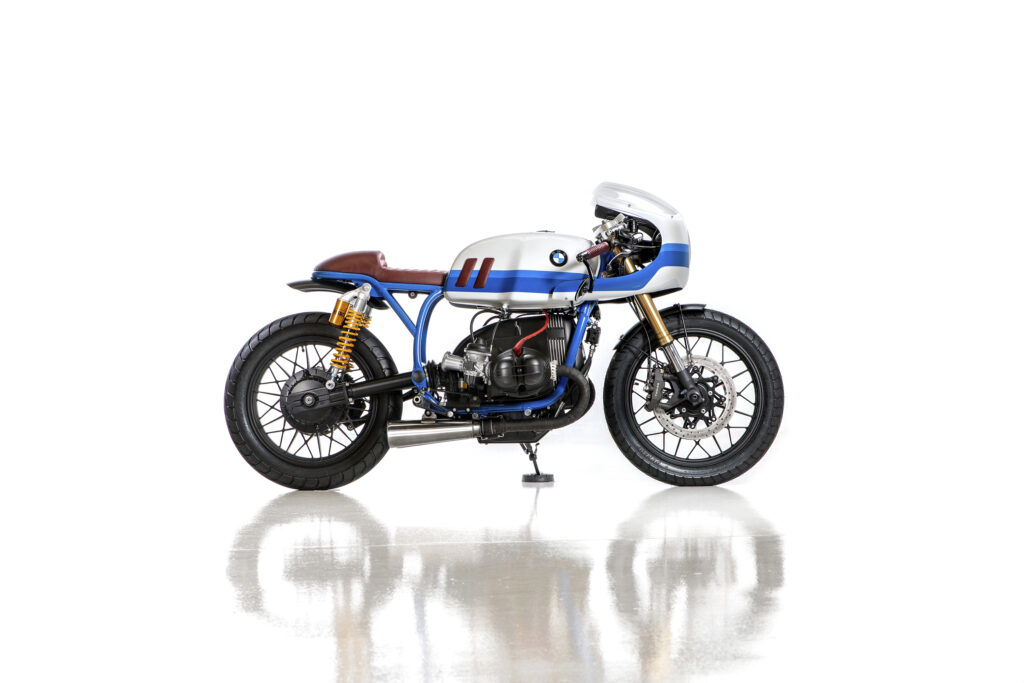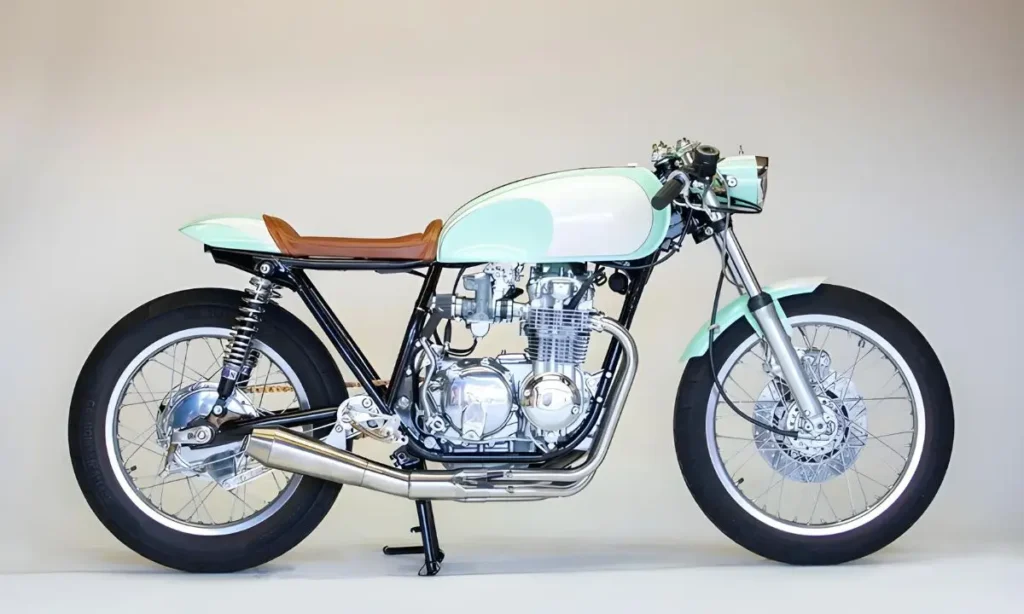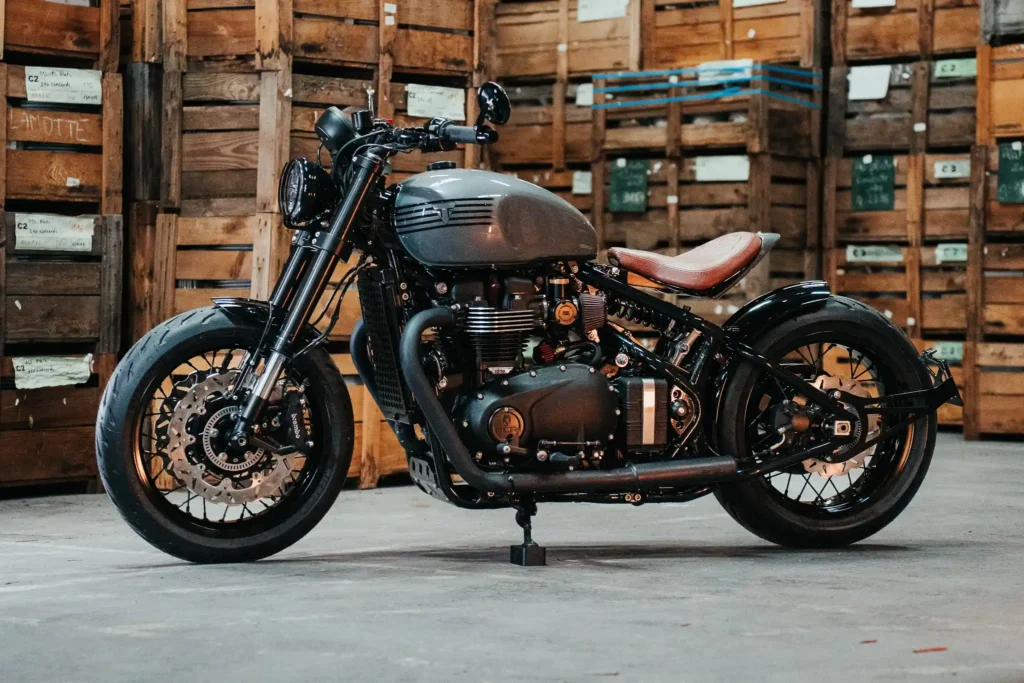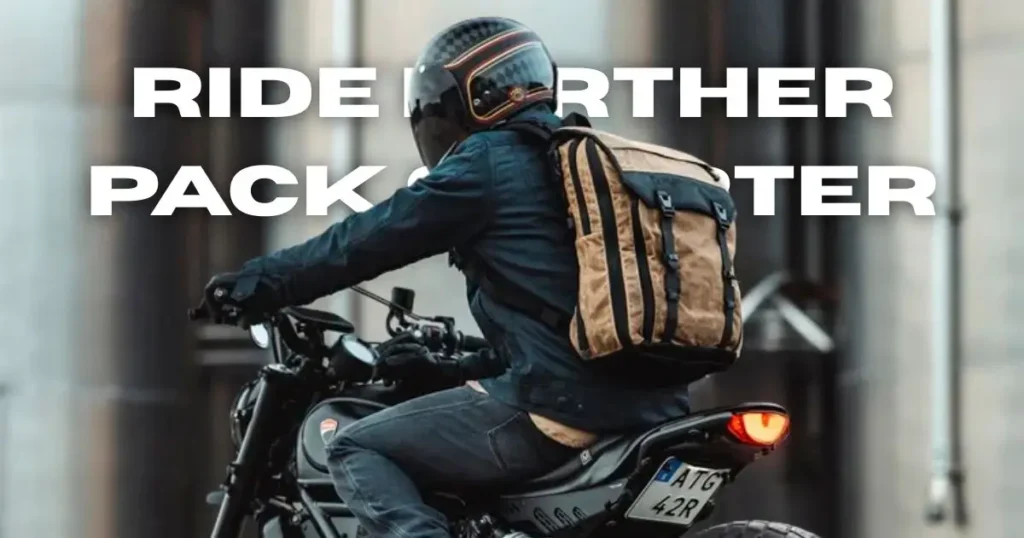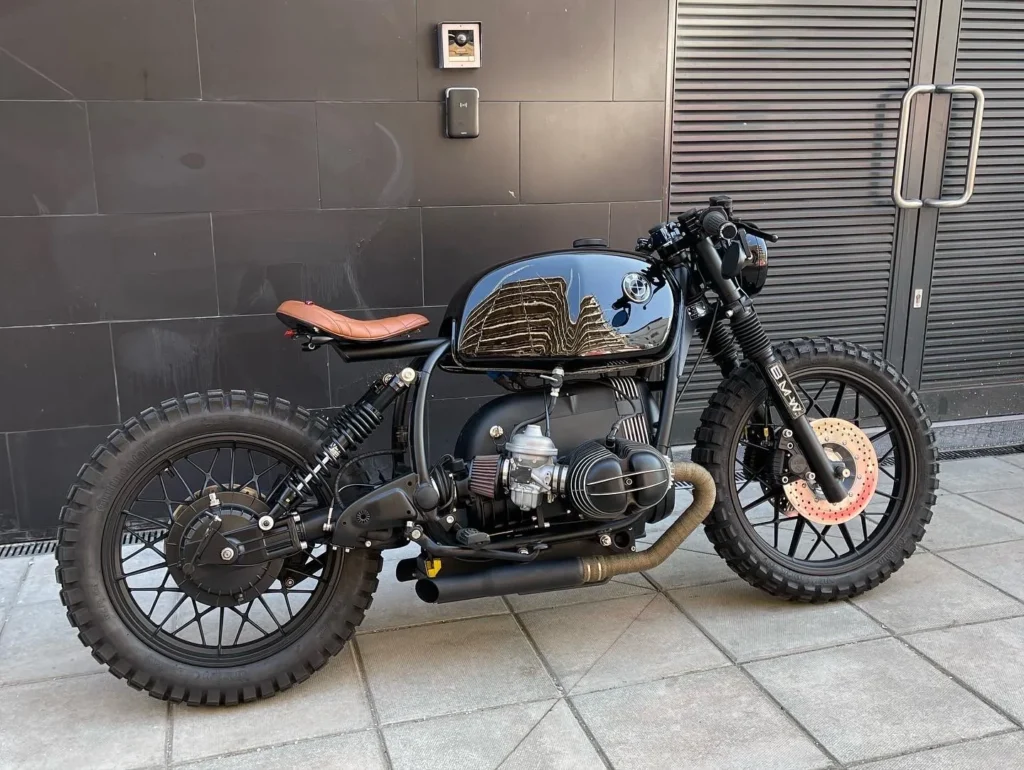Table of Contents
ToggleYour Honda CB750 café racer feels like a beast on the road. It’s a classic. It roars, handles well, and gets those admiring looks. But when it starts backfiring, it’s a real pain. Imagine cruising down the road, and then — pop, pop, bang! It’s not just loud. It feels wrong. You can tell something isn’t working as it should. This problem can be annoying. It can even make you worry about damaging your engine.
Backfiring happens when the engine’s combustion process isn’t right. Instead of the fuel burning smoothly in the engine, it burns in the exhaust. This causes a loud noise. It might even feel like the bike jerks a bit. For many CB750 cafe racer owners, backfiring is a common issue. Especially if you’ve made some changes to your bike or modified it into a café racer.
In this guide, I’ll help you understand why this problem happens. We’ll go through the common causes, how to diagnose the issue, and how you can fix it. You don’t need to be a pro mechanic. With a bit of patience and some simple tools, you can solve this and get your CB750 cafe racer running smoothly again.
Ready? Let’s get started.
Common Causes of Backfiring in Honda CB750 Café Racers
Backfiring can happen for many reasons. It’s not just one thing. Let’s break it down and keep it simple.
1. Fuel System Problems
Your fuel system might be the main cause. The Honda CB750 uses carburetors, and they can get dirty or clogged over time. Dirt, old fuel, or rust can block the jets. This stops fuel from flowing properly. The air-fuel mixture becomes too lean, which means there’s more air than fuel. When this happens, the unburned fuel can ignite in the exhaust, causing that loud pop.
Wrong air-fuel mixture settings can also cause backfiring. If someone adjusted the carburetors without proper tuning, it can mess up the mixture. Too much air and not enough fuel. The engine struggles, and you get backfire.
2. Ignition System Issues
The ignition system controls the spark plugs. The spark plugs ignite the air-fuel mixture in the engine. Worn-out spark plugs or old ignition coils can fail to spark at the right time. The fuel doesn’t burn when it should. Instead, it burns later, in the exhaust.
Timing problems are common too. The timing tells the engine when to fire the spark plugs. If the timing is off, the spark fires too late. This also causes the unburned fuel to explode in the exhaust pipe.
3. Exhaust System Leaks
Check the exhaust system for leaks. Cracks or gaps in the exhaust let in extra air. This extra air can mix with unburned fuel, making it ignite. The loud popping noise is a sign of this.
Sometimes, the gaskets between the exhaust pipes and the engine wear out. They leak air. Replacing old gaskets can often solve the problem.
4. Mechanical Issues
Valves play a big role in your engine’s operation. The valves control the air and fuel going in and out of the engine. If the valves don’t close properly, unburned fuel escapes into the exhaust. This leads to backfiring.
The valve clearances need to be set correctly. On older bikes like the CB750, this is often a problem. The parts wear out over time, and adjustments are needed.
Diagnosing the Backfire
Fixing backfiring starts with finding the exact problem. Guessing won’t help. We need to check each part carefully.
Step 1: Check the Fuel System
Start with the carburetors. Dirt or rust can block them. Turn off the fuel and remove the carburetor bowls. Look for dirt or sticky residue. Clean them with a carb cleaner. Blocked jets can make the engine run lean, causing backfire.
Next, inspect the fuel lines. Old, cracked lines can let air in, messing with the fuel flow. Replace any damaged lines. Also, check the fuel filter. A clogged filter can block fuel, causing a lean mixture.
Step 2: Inspect the Ignition System
Look at the spark plugs. Worn or dirty spark plugs don’t spark well. This can cause late combustion, which leads to backfire. If the plugs look black or oily, replace them. They should have a light brown color if they are working well.
Then, check the ignition coils. Weak or broken coils fail to provide a strong spark. Use a multimeter to test them. If the readings don’t match the manual’s specifications, replace the coils.
Timing plays a big role too. The spark must fire at the right moment. Use a timing light to check the timing marks on the engine. If the timing is off, adjust it according to the manual.
Step 3: Examine the Exhaust System
Check for leaks in the exhaust pipes. Even small cracks can let air in. This extra air mixes with unburned fuel, causing a pop or bang. Feel around the exhaust joints while the engine runs (carefully, since it’s hot). You might feel air escaping.
The gaskets at the exhaust joints can also leak. If you see black soot around the joints, replace the gaskets. This is a common cause of backfiring, especially on older bikes.
Step 4: Check the Valve Clearances
Incorrect valve clearances can cause serious problems. The valves must close tightly for proper combustion. If they don’t, unburned fuel escapes into the exhaust.
You can measure the valve clearance with a feeler gauge. Compare your readings with the manual’s specifications. If the gaps are too wide or too tight, adjust them. This process takes time but makes a big difference.
Solutions and Fixes
You’ve figured out what might be causing the backfire. Now it’s time to fix it. Let’s go through each problem and how to solve it.
Fuel System Fixes
Start with the carburetors. If you find dirt or rust, clean the jets with a carb cleaner. Make sure the jets are clear. Even a tiny blockage can cause trouble. Rebuilding the carburetor might be necessary if the parts are too worn or damaged.
Adjust the air-fuel mixture screws. Turn them slowly, about a quarter turn at a time. This helps balance the fuel and air mix. Listen to the engine as you adjust. It should sound smoother. If the engine pops more, turn the screws the other way.
Replace the fuel filter if it looks clogged. This small part can cause big problems. Clean fuel lines help too. Install new lines if they seem cracked or brittle. Fresh lines prevent air from getting into the system.
Ignition System Fixes
Swap out old spark plugs. New plugs make a big difference. Use the right type recommended in the manual. Check the gap before installing them. A wrong gap can stop the spark from firing properly.
Test the ignition coils. If they don’t give strong readings, get new ones. Faulty coils cause weak sparks, leading to misfires and backfire.
Adjust the timing with a timing light. Line up the timing marks as shown in your manual. The engine should idle smoothly after this. Correct timing helps the engine fire at the right moment, stopping backfire.
Exhaust System Repairs
Fix any leaks in the exhaust. Even small cracks need attention. You can use exhaust sealant for tiny leaks. For bigger cracks, replace the damaged parts. This prevents extra air from entering the exhaust.
Change worn gaskets at the joints. New gaskets seal the exhaust properly. This stops air from getting sucked in and mixing with unburned fuel. The loud popping noise should go away after this fix.
Mechanical Repairs
Adjust the valve clearances. Follow the manual’s guide. Use a feeler gauge to check the gaps. Tighten or loosen the valves as needed. This takes time but makes the engine run much better.
Replace any worn engine parts you find. Old valves, pistons, or rings can all cause problems. They need a proper fit to work well. Fresh parts help keep the engine healthy and prevent backfire.
Preventive Maintenance Tips
You’ve fixed the backfiring issue. Now, let’s keep it from happening again. Regular care can save you time and money. Here’s what you need to do:
1. Inspect Your Bike Regularly
Check the fuel, ignition, and exhaust systems often. Look for dirt, cracks, or loose parts. Simple checks can help you spot issues before they become bigger problems. This saves you from surprises on the road.
2. Keep the Carburetors Clean
Old fuel leaves sticky residue in the carburetors. Drain the fuel if you don’t plan to ride for a while. Clean the carburetors every few months. Fresh fuel keeps the jets clear and helps the engine run smoothly.
3. Replace Spark Plugs Often
Spark plugs wear out over time. Swap them out every few thousand miles. Keep a spare set on hand. Fresh plugs give a better spark, helping your engine fire correctly. This prevents backfire and keeps your bike running well.
4. Check the Valve Clearances
Valves need proper adjustment. Measure the clearances once or twice a year. Adjust them as needed. Tight or loose valves make the engine struggle. Regular checks keep your engine healthy.
5. Use Quality Fuel and Oil
Cheap fuel often has impurities. These can clog your carburetors and cause issues. Always fill up with good-quality fuel. Use the right oil as recommended by your manual. Quality oil keeps the engine parts moving smoothly and prevents wear.
6. Store Your Bike Properly
Store your Honda CB750 in a dry place. Moisture can cause rust, especially in the fuel and exhaust systems. Cover the bike if you’re not riding for a while. This simple step helps protect it from weather damage.
7. Stick to a Tune-Up Schedule
Set a regular tune-up schedule. Change the oil, clean the air filter, and check the cables. Following a routine keeps everything in top shape. A well-tuned bike runs better and avoids backfire issues.
Conclusion
Backfiring on your Honda CB750 café racer can be frustrating. It’s loud. It’s sudden. It takes away from the smooth ride you want. But fixing it is possible. You’ve seen the main causes: issues with the fuel system, problems in the ignition, leaks in the exhaust, and wrong valve clearances. All these can lead to that annoying popping sound.
Checking each part step by step makes it easier to find the issue. Clean the carburetors. Replace worn-out spark plugs. Fix any exhaust leaks. Adjust the valve clearances. These small steps can make a big difference.
Remember, regular maintenance is key. Simple habits like using quality fuel, changing spark plugs, and cleaning carburetors help keep your bike in top shape. This way, you avoid backfire problems in the future.
Your Honda CB750 café racer deserves good care. It’s a classic bike. Treat it well, and it will give you many smooth rides ahead.
FAQs
Why does my Honda CB750 backfire during deceleration?
This often happens because of a lean air-fuel mixture. When you slow down, unburned fuel can ignite in the exhaust, causing a backfire.
Can old spark plugs cause backfiring?
Yes, worn or dirty spark plugs can cause weak sparks. This leads to unburned fuel in the exhaust, resulting in backfiring.
How do I know if my carburetors need cleaning?
Signs include rough idling, poor acceleration, and backfiring. Regular cleaning helps keep your bike running smoothly.
Is backfiring harmful to my engine?
Occasional backfiring is usually not harmful. But frequent backfiring can indicate problems that may damage the engine over time.
How often should I check valve clearances?
It’s good to check valve clearances every 5,000 to 10,000 miles. Regular checks help prevent backfiring and keep the engine running well.


